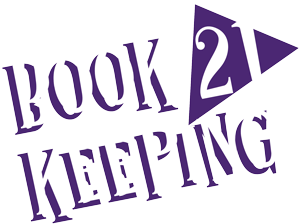Usually, the end of one year is often the best time to review your ongoing business strategy. But now, with our forced isolation with the COVID-19 pandemic, it’s the perfect time to re-evaluate our business.
Not every business can generate revenue right now, but every business needs to be investing in a plan that will help them post-COVID-19. Your competitors are in hibernation, which means working your plan straight away puts you at a competitive advantage.
This high-level plan is a roadmap to achieving one or more goals focused on gaining a sustainable advantage in the marketplace. I recommend breaking down your plan into different types of strategies, such as a marketing strategy, a recruiting strategy, and a financial strategy.
Increasing the profitability of your brokerage should be one of the main components of your plan. Why? Because the most brilliant strategy and tactics are of little use if your brokerage does not support or cannot execute them.
Here, are the five top ways you can increase profitability in your firm- now and post COVID-19.
1. Increase your Brokerage Commissions
No matter how you look at it, this is the easiest way for many brokerages to increase profits. But wait! Don’t I have to do the “standard” 6% commission? First, we all know there is no standard commission rate, yet brokers get very flustered with the prospect of raising their commission rates.
Real Estate brokerages are no different than other service type businesses in determining a profitable price for their services. And just like them, they are failures at developing a price strategy. Dan Kennedy, in his book NO B.S. Pricing Strategy, offers this explanation:
“…use price as a positive marketing tool and path to an advantage…”
“When I say they fail at price strategy, I mean they fail to use price as a positive marketing tool and path to an advantage, I also mean they fail to create the greatest possible profit in their business. The reasons for these failures group into attitudinal and practical, into fear-based ideas and self-imposed limitations, and marketing and selling mistakes. The most important thing to know is that your prices (commission rates) are your choice and your responsibility.”
There are millions of brokerage owners that don’t know how to set prices for their services, trusting their competitors or the government or luck to do their thinking for them. Brokers believe commission rates are imposed on them, but there is always an opportunity for liberation from group mind-think!
Brokers tend to think they are in an industry in which everyone charges the same thing for the same services; therefore, they don’t need a pricing strategy. And this is precisely why they need a pricing strategy – not every real estate firm provides the same services or quality of service or added-value service.
2. Cut Expenses by 10% Right Away
Many brokerage owners misuse the word expense when they talk about buying buildings or equipment; these are assets. There is a cost for acquiring an asset. The depreciation of those assets is an expense. Costs of making or buying assets are not expenses; they are the costs of the assets acquired. Expense means you gave up something of value to get revenue. So here, we are talking about expenses to get revenue.
Some brokerages think they are running lean, and there is no waste. A quarterly expense analysis is beneficial to every business. It confirms whether the “no waste” myth is true or sheds light on areas that can be improved. An expense analysis shows where the firm is spending – over or under – and it leads to better questions surrounding the daily costs and investments to confirm that those costs and expenditures are generating a return for the brokerage. These costs include payroll, software, internet, phone, promotion costs, education and travel, materials and supplies, dues and subscriptions, etc.
Once expenses are identified as necessary to maintain the standard of service, then confirm the brokerage is getting the most from these expenses. Once these essential expenses are CONFIRMED, it’s easier to say goodbye to unused subscriptions, selling expenses purchased for one client, underused staff, or any other excess spending.
3. Determine your “Breakeven Point”
To control costs and plan for profitability, the brokerage must know the actual expenses and revenue in real-time and create standards on how to gauge present performance. Using past revenue/expense/profit data can help set the budget for planned profit in the future.
There are two types of expenses (grouped, they are called overhead) in a brokerage firm – variable and fixed. Production causes variable expenses. No production; no expense. Commissions, fees, overrides are all dependent on Gross Commission Income (GCI); therefore are variable expenses.
Fixed expenses are not caused by production and occur whether anything is sold or not: sales management salaries, advertising, communications, rent, property taxes, auto expense, insurance, etc.
However, fixed costs don’t always stay “fixed,” such as when the brokerage grows to a point where it needs another salaried employee or advertising increases because the brokerage decides to go for growth at any cost. And variable expenses – commissions and selling expenses – can escalate if the brokerage has an inadequate compensation plan.
The firm breakeven point is the lowest amount of income required to cover all expenses. Since you want to make a profit, you should allocate a percentage for profit in calculating the breakeven point.
4. Re-design your compensation plan(s)
After compensating your sales associates, if the brokerage doesn’t have enough money left to pay its expenses (overhead) and make a reasonable profit, it won’t be in business for long. Commissions comprise the largest expense and have a direct effect on the profits of the brokerage.
Many firms find they don’t have enough cash from GCI to cover expenses after paying sales commissions, so they resort to stealing the company profits or going into debt.
Your compensation plans should be personalized to meet the firm’s goals and the needs of its sales associates. A custom plan will take into consideration the brokerage breakeven point and the sales associate breakeven point. This associate breakeven point is where the sales associate earns enough revenue for the brokerage to cover the sales associate’s share of company expenses.
It’s best practice to establish the sales associate’s breakeven point well below their expected revenue production, so if their production drops, it does not drop below the associate’s plan breakeven point.
Your compensation plan is critical in guaranteeing your firm’s profitability.
5. How your numbers create an effective marketing strategy to increase profits
Another essential way to increase profits is with an effective marketing strategy that attracts new customers, optimizes the value of customers, and rescues lost customers. Before making any significant decisions on future commitments in marketing and advertising, brokers must analyze their past efforts to see if they were cost-effective and provided a return.
Brokerages should have a 12-month marketing strategy plan, which includes an analysis of the costs to obtain listings and buyers for those listings. Also included in the plan is the average number of listings, the total number of associates along with each of the associates’ conversion rates from listings to sales.
First, calculate the Average Revenue per Listing per Associate. This measurement gives a “blink-of-an-eye” look at how well or how poorly the selection of customers, sales processes, and associates are doing overall, against the same time prior year or even during certain seasons, special promotions and events. Increasing the Average Revenue per Listing per Associate is a great way (but often overlooked) actually to increase revenue.
“analyze multiple transactions and buying behavior of customers over some period of time”
The next calculation is Customer Value (CV) – analyzing multiple transactions and buying behavior of customers over some time. In determining CV, you can segment “customer lists” into A, B, and C level customers to invest in them and communicate with them differently.
It also helps source customers better by watching where “A” customers (buyers or listings) came from and from where “C” customers came. It also evaluates the value of customers for each sales associate. If you want to delve even deeper, you can look at the amount of service required of A customers versus C customers, therefore “firing” those customers (listings) that cost you money to keep.
Lifetime Customer Value (LCV) is another number that brokers have a hard time accepting. Even though some “sellers” usually move out of the market area, so those customers are least likely to have more value than the one-time sale (not accounting for any future referrals). However, many real estate customers will own multiple properties, or they are investors in residential homes for re-sale.
Also, an “LCV” calculates new buyers based on the future sale of their property. This number ultimately controls decisions about what to invest in obtaining customers (listings & buyers). Knowing this number keeps the brokerage keenly aware of the costs of losing a customer (listings & buyers) and helps determine what you are willing to invest in keeping them.
There you have 5 Top Tactics to increase your profitability in 2020.
Suze Kirkpatrick applies her 25+ years of experience as a real estate brokerage owner and the CFO of a large western ranch to her vocation as a Profit First Money Coach. Her mission is to help micro-business owners (like real estate agents) replace heart-throbbing panic with cash-flow certainty with her signature program “Profits for Life.”
For more information, please check out her website at www.bookkeeping21.com, send an email to her at susan@bookkeeping21.com.

